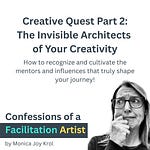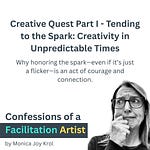Welcome! Today, I’m launching our Co-Intelligence book club series, inspired by Ethan Mollick’s “Co-Intelligence: Living and Working with AI.” This first post is all about grounding ourselves in the basics, because before you can experiment, you need to know the landscape.
AI Fundamentals: Decoding the Jargon
Let’s start with some key terms that often get tossed around:
GPT (General Purpose Technology): This isn’t just about ChatGPT! GPT refers to innovations that impact every industry and aspect of life, think computers or the internet. These technologies have slow adoption curves because they require us to adapt and rethink our processes. You can’t just take a quick course and call it a day; you need to experiment and learn by doing.
LLM (Large Language Model): Tools like ChatGPT, Perplexity, and Claude are all LLMs. If you’re stuck choosing between them, here’s my favorite analogy from my colleague, Kristian Manrique.
“LLMs are like burger chains. The core product is similar, but the ingredients, preparation, and experience differ. You might prefer McDonald’s, Burger King, or Wendy’s depending on your taste or use case.”
For example, Perplexity is great for academic research, ChatGPT is the household name, and Claude is known for its writing chops. The best way to learn? Just pick one and start experimenting. You’ll discover the nuances as you go.
The Three Sleepless Nights Principle
Mollick’s first chapter introduces a memorable concept: “to truly understand AI, you need about three sleepless nights,” roughly 24 hours of focused, uninterrupted experimentation. As someone who’s already logged plenty of sleepless nights (parenthood, anyone?), I’m not advocating for literal insomnia! The point is to carve out dedicated time to really play, tinker, and discover what AI can do for you. Casual dabbling won’t cut it if you want to unlock real value.
“The cost of really getting to know AI is at least three sleepless nights. After a few hours of using AI systems, there will come a moment when you’ll realize that Large Language Models don’t act like you’d expect a computer to act. Instead, they act more like a person. It dawns on you that you’re interacting with something alien and that things are about to change in fundamental ways.” – Ethan Mollick, Co-Intelligence
I’ve even advocated at work for a new kind of leave policy: three days set aside for team members to assess their roles, research AI use cases, and experiment. (Yes, it’s currently being met with skepticism, but I believe this is the kind of forward-thinking organizations need to stay competitive.) Whether you’re in a big company or a solopreneur, the principle is the same: schedule time for AI exploration. If you’re serious about leveraging AI to maximize your impact and minimize your working frustrations, you need to be intentional and disciplined about it.

My Confession: AI Is My Creative Partner
Here’s my secret: the only reason I maintain consistent content across my blog, LinkedIn, and other platforms is because AI serves as my creative partner. Without this partnership, you wouldn’t see the consistency you do! My workflow blends human insight and AI support at every stage:
Research Partnership: Perplexity Pro is my research assistant of choice. I treat it as a knowledgeable partner, not a replacement for my own thinking.
Content Development: I merge personal notes and anecdotes with AI-generated drafts to create outlines and guides, structured, but still authentic.
Transcription & Adaptation: I use AI to transcribe and adapt content, turning one recording into multiple blog and social media posts.
Creative Ideation: AI helps me brainstorm everything from images to LinkedIn carousels to multimedia content.
My current AI stack includes Perplexity Pro (primary LLM), ChatGPT and Claude for specific tasks, DALL-E and MidJourney for images, Cleave AI for experimental social content, Loom and Zoom for recording and transcription, and the built-in AI features in Canva and Miro for design and facilitation.

Planned Exploration Areas: My AI Roadmap
Over the next eight weeks, I’m committing to systematic experimentation in these areas:
LLM Nuance Testing: Comparing how different models (Claude, ChatGPT, Perplexity) handle the same prompts to understand their unique strengths.
AI Agents & Automation: Exploring workflow automation, inspired by mentors and recent discussions about using tools like Zapier with AI agents.
Personal Life Applications: Testing AI for family trip planning, meal planning automation, and grocery list generation, especially since most meal planning apps haven’t worked for me so far.
Professional Prototyping: Upping my skills in rapid prototyping and concept sketching with AI, especially for innovation and design sprints.
Development Tools: Exploring AI-powered development tools like Cursor, even as a non-developer product manager.
Getting Started: Practical Steps for AI Integration
If you’re ready to start your own AI journey, here’s how to begin:
Commit to Focused Experimentation: Whether it’s Mollick’s “three sleepless nights” or daily sessions over several weeks, prioritize deep learning over casual play.
Start with High-Impact, Low-Risk Tasks: Use an LLM for interview prep, content ideation, or research. These are safe bets that build familiarity fast.
Identify Your Working Frustrations: Map your tasks to your strengths and energy-drainers. The latter are ripe for AI assistance.
Experiment with Content Creation: If you’re an entrepreneur, thought leader, or anyone who needs to communicate, AI can help you scale your output, without sacrificing your unique voice.
Everything you read here is an experiment in co-creation with AI. I’m learning, iterating, and sharing in real time. If you’re on a similar journey, drop a comment or reach out. I’d love to hear about your experiments!
See you next week for the next installment of the Co-Intelligence book club. Let’s get curious together!















